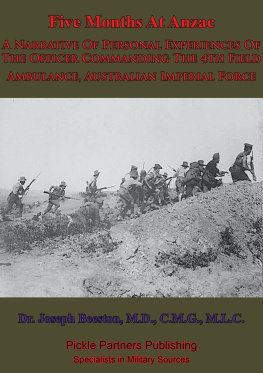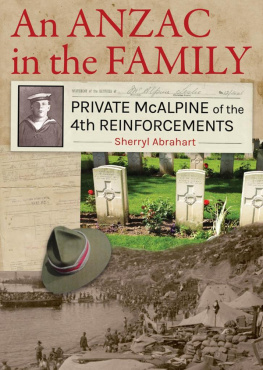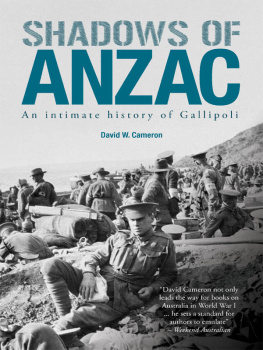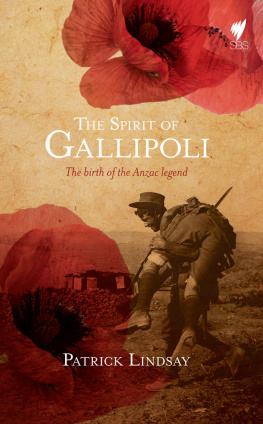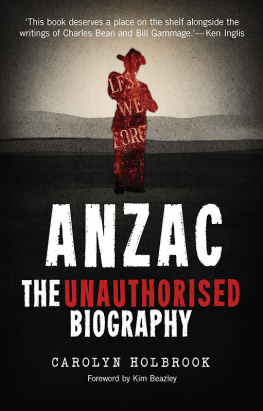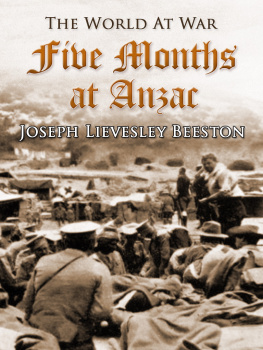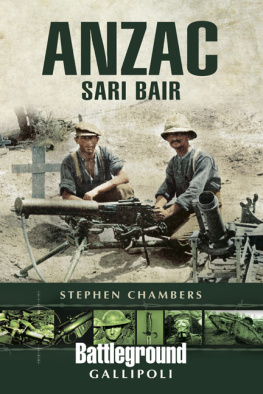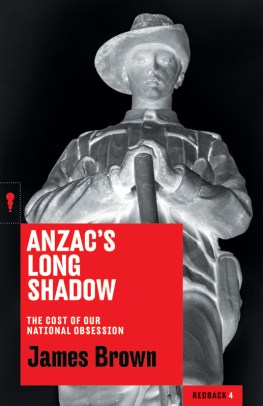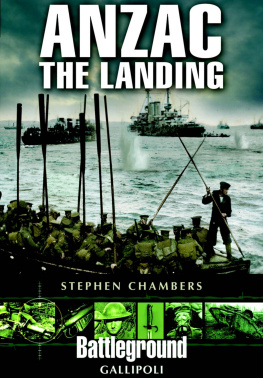

ALSO BY GRAHAM SEAL
Dogs Eye and Dead Horse: The Complete Guide to Australian Rhyming Slang
Great Australian Stories: Legends, Yarns and Tall Tales
Inventing ANZAC: The Digger and National Mythology
Outlaw Heroes in Myth and History
Tell Em I Died Game: The Legend of Ned Kelly
These Few Lines: A Convict Story
(ed.) Echoes of Anzac: The Voice of Australians at War

THE MEN AND WOMEN WHO CREATED
THE DIGGER LEGEND
GRAHAM SEAL

While every effort has been made to obtain permission to reproduce copyrighted material in this book, the publisher welcomes further information from copyright holders so they can be acknowledged in future editions.
First published in 2013
Copyright Graham Seal 2013
All rights reserved. No part of this book may be reproduced or transmitted in any form or by any means, electronic or mechanical, including photocopying, recording or by any information storage and retrieval system, without prior permission in writing from the publisher. The Australian Copyright Act 1968 (the Act) allows a maximum of one chapter or 10 per cent of this book, whichever is the greater, to be photocopied by any educational institution for its educational purposes provided that the educational institution (or body that administers it) has given a remuneration notice to Copyright Agency Limited (CAL) under the Act.
Allen & Unwin
Sydney, Melbourne, Auckland, London
83 Alexander Street
Crows Nest NSW 2065
Australia
| Phone: | (61 2) 8425 0100 |
| Email: | info@allenandunwin.com |
| Web: | www.allenandunwin.com |
Cataloguing-in-Publication details are available
from the National Library of Australia
www.trove.nla.gov.au
ISBN 978 1 74331 059 5
Cover photo: Australian War Memorial, Negative Number CAM/68/0144/VN (E00233)
Set in 12.5/17 pt Adobe Caslon Pro by Bookhouse, Sydney
Printed and bound in Australia by Griffin Press
10 9 8 7 6 5 4 3 2 1

Contents

SINCE 25 APRIL 1915, Australians have progressively expanded and deepened the significance of Gallipoli, the battles of the western front, Tobruk, Kokoda and Long Tan, in addition to many other engagements in the Middle East, Korea, Malaya, Indonesia, Iraq and Afghanistan. The national communitys awareness also encompasses the many peacekeeping operations around the world in which Australian troops have taken part. The death and injury of hundreds of thousands of Australians, together with the resulting grief and ongoing suffering within their families, have left a permanent and profound imprint on the nation. This is recorded in stone, wood and metal on memorials and honour boards in almost every community in the country and in many places abroad.
The term that embodies this combination of sacrifice, duty, loss and meaning is Anzac, formed from the telegraphic address of the Australian and New Zealand Army CorpsANZAC. This one little word has come to resonate many things Australians consider to be profoundly symbolic of their identity: courage, determination, anti-authoritarianism, egalitarianism and a larrikin attitude to the grim realities of war and so, of life and death in general. Whether these characteristics are genuine or not is a question that is often debated. Certainly, the fact that the concept of Anzac has persisted for almost a century and shows every sign of strengthening into the future as a popular focus of national identity, among the young as well as the old, suggests that it has wide support in the community.
Through the decades following World War I, during which Anzac has become an inescapable aspect of our society, innumerable stories have been told about those who contributed to its making. These spoken and written memorials include tales of heroism, suffering and endurance. Perhaps surprisingly to some, Anzac tales are often humorous, for laughter is an essential element in coping with the realities of war and its long aftermath. Many are widely known, in one version or another, and are told and retold in books, newspapers, films and even in schoolrooms. Many other Anzac stories are known only to particular groups or to the inhabitants of particular communities, perhaps only to a family. Whatever their provenance, these stories together make up an intangible web of knowledge about the Australian experience of war and the way we understand it through Anzac. They form a network of shared meaning that is publicly reaffirmed every year on 25 April at memorials around the country and, increasingly, around the world.
It is these stories, told whenever possible in the words of those who were thereat the front line or at homethat appear in Great Anzac Stories. At least, a few of them appear. Anzacs long existence and wide appeal has generated a vast body of anecdote, legend, reminiscence and yarn and this book can only represent a small selection of these many tales.
In telling these stories, the book begins with Foundations, a selection of accounts from Gallipoli, the western front and the Middle East. This is followed by Heroes, which tells of courageous deeds in many of Australias wars. Home fronts are as important as battlefronts, and a selection of tales from Australia and Blightythe United Kingdomnext appears here. The large body of digger humour is given due representation under the heading of Laughter, followed by a collection of Anzac Legends. The book concludes with a section titled Memories, which focuses on the commemoration of war and its consequences for all, at home and at the front.
The concept of Anzac is treated broadly. As well as stories about the army and the original diggersthe largely citizen foot soldiers of the First Australian Imperial Force (AIF)the book includes those of the Royal Australian Air Force (RAAF) and the Royal Australian Navy (RAN). As well as tales of men at war it includes those of nurses, doctors and even animals. While the NZ in Anzac is often overlooked, there are also a few stories specifically about the Kiwi experience of war and the considerable significance of Anzac in that country.
Anzac is an idea that is a vital element of the Australian consciousness. It has been with us for almost a century, sometimes referred to as the spirit of Anzac, or the legend of Anzac. Over that time it has increased and decreased in popularity, with the lowest level of public observance occurring on the Anzac days between the late 1960s and late 1980s. Since then we have seen a strong resurgence of interest in the day and, consequently, the meaning of Anzac itself. This has been particularly marked among young adults, although older Australians have also been flocking to Anzac Day eventsespecially the Dawn Serviceas well as travelling to the various sites of Anzac memory in Britain, Turkey, France, Vietnam, Papua New Guinea and Singapore, to name only some of the more popular destinations for these pilgrimages, as they are often called.
Next page


